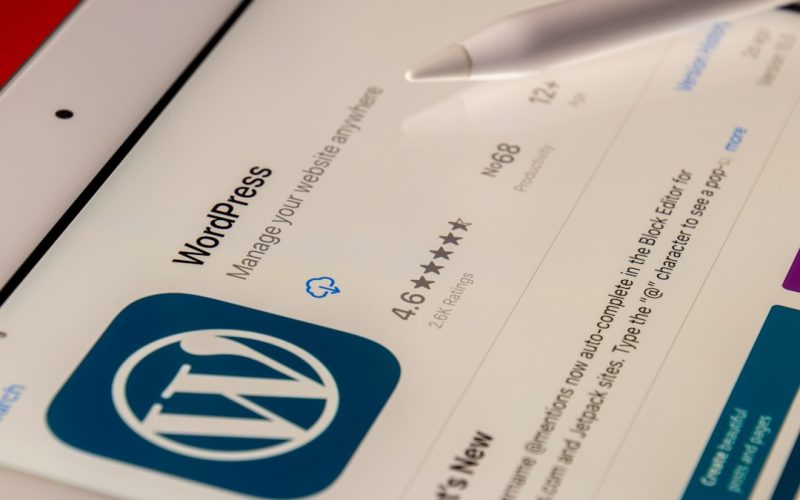As I delve into the world of Search Engine Optimization (SEO) for WordPress, I realize that grasping the fundamentals is crucial for anyone looking to enhance their website’s visibility. SEO is essentially the practice of optimizing a website to rank higher in search engine results, thereby increasing organic traffic. For WordPress users, this means understanding how search engines work and what factors influence their ranking algorithms.
I’ve learned that elements such as keyword usage, site structure, and user experience play significant roles in determining how well a site performs in search results. Moreover, I’ve come to appreciate that SEO is not a one-time task but an ongoing process. It requires continuous learning and adaptation to the ever-evolving landscape of search engine algorithms.
For instance, Google frequently updates its algorithms, which can impact how my site ranks. Therefore, staying informed about these changes and adjusting my strategies accordingly is essential. By understanding the basics of SEO, I can lay a solid foundation for my WordPress site, ensuring that it is not only user-friendly but also optimized for search engines.
Table of Contents
ToggleKey Takeaways
- Understanding the Basics of SEO for WordPress:
- SEO is essential for improving your WordPress site’s visibility on search engines.
- It involves optimizing your site’s content, structure, and performance to rank higher in search results.
- Choosing the Right SEO Plugin for Your WordPress Site:
- Select a reputable SEO plugin like Yoast SEO or All in One SEO Pack to help optimize your site.
- Look for features such as XML sitemap generation, meta tag optimization, and content analysis.
- Optimizing Your WordPress Site’s Permalinks for SEO:
- Use descriptive and keyword-rich permalinks to improve your site’s SEO.
- Avoid using default permalinks and customize them to be more search engine friendly.
- Creating High-Quality, SEO-Friendly Content on WordPress:
- Produce original, valuable, and relevant content that incorporates targeted keywords.
- Structure your content with headings, subheadings, and bullet points for better readability and SEO.
- Utilizing Keywords Effectively in Your WordPress Content:
- Conduct keyword research to identify relevant and high-traffic keywords for your content.
- Integrate keywords naturally into your content, including in titles, headings, and meta descriptions.
Choosing the Right SEO Plugin for Your WordPress Site
When it comes to enhancing my WordPress site’s SEO, selecting the right plugin is a pivotal step. With numerous options available, I often find myself weighing the pros and cons of each. Popular plugins like Yoast SEO and All in One SEO Pack have become staples in the WordPress community due to their comprehensive features and user-friendly interfaces.
These plugins offer tools that help me optimize my content, manage meta tags, and even generate XML sitemaps, which are essential for search engines to crawl my site effectively. In my experience, the right SEO plugin can significantly streamline my optimization efforts. For instance, Yoast SEO provides real-time feedback on my content’s readability and keyword usage, allowing me to make adjustments on the fly.
Additionally, these plugins often come with built-in support for social media integration and schema markup, which can further enhance my site’s visibility. Ultimately, choosing the right SEO plugin not only simplifies the optimization process but also empowers me to make informed decisions that positively impact my site’s performance.
Optimizing Your WordPress Site’s Permalinks for SEO

One of the often-overlooked aspects of SEO is the structure of permalinks on my WordPress site. A permalink is the URL that leads to a specific post or page, and optimizing it can have a significant impact on my site’s search engine ranking. I’ve learned that using clean, descriptive URLs that include relevant keywords can improve both user experience and SEO. For example, instead of a generic URL like “example.com/?p=123,” I can create a more informative link such as “example.com/seo-tips-for-wordpress.” To optimize my permalinks effectively, I navigate to the WordPress settings and select a structure that best suits my content strategy.
The “Post name” option is often recommended because it creates URLs that are easy to read and remember. Additionally, I ensure that my permalinks are consistent across my site, as this helps search engines understand the hierarchy and relevance of my content. By taking the time to optimize my permalinks, I not only enhance my site’s SEO but also make it easier for visitors to navigate and share my content.
Creating High-Quality, SEO-Friendly Content on WordPress
| Metrics | Results |
|---|---|
| Keyword Density | Optimal (1-2%) |
| Readability Score | Above 60 (Flesch-Kincaid) |
| Meta Description Length | Between 150-160 characters |
| Image Alt Text | Optimized for target keyword |
| Internal Links | At least 2-3 per post |
Creating high-quality content is at the heart of any successful SEO strategy. I’ve discovered that search engines prioritize content that provides value to users, so I focus on producing informative and engaging articles that address the needs and interests of my audience. This involves conducting thorough research on relevant topics and ensuring that my writing is clear and concise.
By doing so, I can establish myself as an authority in my niche while also improving my chances of ranking higher in search results. In addition to quality, I pay close attention to formatting and structure when creating content on WordPress. Utilizing headings, bullet points, and images not only makes my articles more visually appealing but also enhances readability.
Furthermore, I incorporate relevant keywords naturally throughout my content without resorting to keyword stuffing. This balance between quality and optimization is crucial; it allows me to create content that resonates with readers while still adhering to SEO best practices.
Utilizing Keywords Effectively in Your WordPress Content
Keywords are the backbone of any effective SEO strategy, and I’ve learned how vital it is to utilize them effectively within my WordPress content. Conducting keyword research helps me identify terms and phrases that potential visitors are searching for related to my niche.
Tools like Google Keyword Planner and Ubersuggest have become invaluable resources for discovering high-traffic keywords that I can incorporate into my articles.
Once I have identified relevant keywords, I strategically place them in key areas such as titles, headings, and throughout the body of my content. However, I am careful not to overdo it; maintaining a natural flow in my writing is essential for keeping readers engaged. Additionally, I consider using long-tail keywords—more specific phrases that may have lower search volume but often lead to higher conversion rates.
By effectively utilizing keywords in my content, I can improve my site’s visibility while attracting a more targeted audience.
Implementing Image Optimization for Better SEO on WordPress

Images play a crucial role in enhancing the visual appeal of my WordPress site, but they also require optimization for better SEO performance. I’ve learned that large image files can slow down page loading times, negatively impacting user experience and search engine rankings. To combat this issue, I ensure that all images are compressed without sacrificing quality before uploading them to my site.
In addition to file size optimization, I also focus on using descriptive file names and alt text for each image. This not only helps search engines understand what the image is about but also improves accessibility for users with visual impairments. By implementing these image optimization techniques, I can enhance both the aesthetic quality of my site and its overall SEO performance.
Utilizing Internal Linking Strategies for SEO Success on WordPress
Internal linking is a powerful yet often underutilized strategy in SEO that I have come to appreciate deeply. By linking related posts and pages within my WordPress site, I can guide visitors through my content while also signaling to search engines which pages are most important. This practice not only improves user experience by providing additional context but also helps distribute page authority across my site.
When creating internal links, I strive to use descriptive anchor text that accurately reflects the linked content. This approach not only aids in navigation but also enhances keyword relevance for both users and search engines. Additionally, I regularly review older posts to add internal links where appropriate; this keeps my content interconnected and encourages visitors to explore more of what I have to offer.
Utilizing External Linking Strategies for SEO Success on WordPress
While internal linking is essential for guiding users through my site, external linking also plays a significant role in enhancing my site’s credibility and authority. By linking to reputable sources within my content, I can provide additional value to readers while also signaling to search engines that I am referencing high-quality information. This practice can improve my site’s trustworthiness and potentially boost its ranking in search results.
I’ve found that when incorporating external links, it’s important to choose sources that are relevant and authoritative within my niche. This not only enriches the reader’s experience but also encourages other websites to link back to my content in return—a mutually beneficial relationship that can enhance both parties’ SEO efforts. By strategically utilizing external linking strategies, I can create a more robust network of information that benefits both my audience and my site’s overall performance.
Optimizing Your WordPress Site’s Loading Speed for Better SEO
In today’s fast-paced digital landscape, loading speed has become a critical factor in determining a website’s success. I’ve learned that slow-loading pages can lead to high bounce rates and negatively impact user experience—both of which are detrimental to SEO. To optimize loading speed on my WordPress site, I take several proactive measures.
First and foremost, I ensure that I’m using a reliable hosting provider known for its speed and performance. Additionally, I leverage caching plugins like WP Super Cache or W3 Total Cache to store static versions of my pages, reducing load times for returning visitors. Furthermore, optimizing images and minimizing HTTP requests by combining CSS and JavaScript files are strategies I’ve implemented to enhance speed.
By prioritizing loading speed optimization, I’m not only improving user experience but also boosting my site’s chances of ranking higher in search engine results.
Utilizing Social Media Integration for Improved SEO on WordPress
Social media has become an integral part of online marketing strategies, and I’ve realized its potential impact on SEO as well. By integrating social media sharing buttons into my WordPress site, I encourage visitors to share my content across various platforms—this not only increases visibility but also drives traffic back to my site. The more shares and engagement my content receives on social media, the more likely it is to attract backlinks from other websites.
Moreover, maintaining an active presence on social media allows me to promote new blog posts directly to my audience. This engagement can lead to increased traffic and improved user interaction metrics—factors that search engines consider when ranking sites. By leveraging social media integration effectively, I’m able to create a synergistic relationship between my website and social platforms that enhances both visibility and SEO performance.
Monitoring and Analyzing Your WordPress Site’s SEO Performance
Finally, monitoring and analyzing the performance of my WordPress site’s SEO efforts is crucial for ongoing success. Tools like Google Analytics and Google Search Console provide invaluable insights into how users are interacting with my site and which keywords are driving traffic. By regularly reviewing this data, I can identify areas for improvement and adjust my strategies accordingly.
I’ve learned that tracking metrics such as organic traffic growth, bounce rates, and average session duration helps me gauge the effectiveness of my SEO efforts over time. Additionally, keeping an eye on keyword rankings allows me to see which terms are performing well and which may need further optimization. By consistently monitoring and analyzing these metrics, I’m able to refine my approach continually—ensuring that my WordPress site remains competitive in an ever-changing digital landscape.
In conclusion, mastering SEO for WordPress requires a multifaceted approach encompassing various strategies from choosing the right plugins to creating high-quality content and optimizing technical aspects like loading speed and permalinks.
By implementing these practices diligently and staying informed about industry trends, I’m confident that I can enhance my site’s visibility and achieve long-term success in search engine rankings.
If you’re looking to further enhance your website’s SEO performance, you may want to consider conducting a comprehensive SEO audit. This detailed guide on Mastering the Art of Website SEO Audits provides valuable insights and tips on how to effectively analyze and optimize your site for better search engine rankings. By following the strategies outlined in this article, you can ensure that your WordPress site is fully optimized for SEO success.
FAQs
What is SEO?
SEO stands for Search Engine Optimization, which is the practice of increasing the quantity and quality of traffic to your website through organic search engine results.
Why is it important to optimize a WordPress site for SEO?
Optimizing a WordPress site for SEO is important because it helps improve the site’s visibility in search engine results, which can lead to increased traffic and potential customers.
What are some key factors to consider when optimizing a WordPress site for SEO?
Some key factors to consider when optimizing a WordPress site for SEO include keyword research, content quality, site speed, mobile-friendliness, and backlink building.
How can I improve the site speed of my WordPress site for better SEO performance?
You can improve the site speed of your WordPress site by using a reliable hosting provider, optimizing images, using a caching plugin, and minimizing the use of unnecessary plugins and scripts.
What are some best practices for on-page SEO on a WordPress site?
Some best practices for on-page SEO on a WordPress site include optimizing meta titles and descriptions, using relevant keywords in content, creating a clear site structure, and optimizing images with alt tags.
How can I monitor the SEO performance of my WordPress site?
You can monitor the SEO performance of your WordPress site by using tools like Google Analytics and Google Search Console to track traffic, keywords, and site performance.




